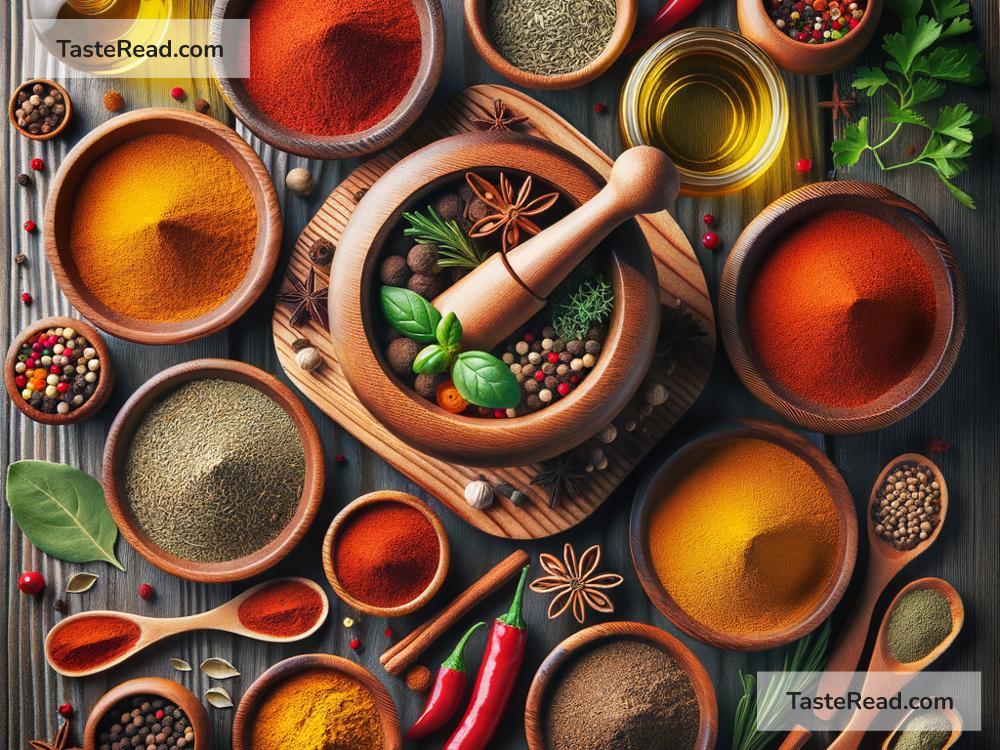How to Infuse Spices: A Simple Guide to Flavorful Cooking
Have you ever wondered how chefs manage to create such flavorful dishes that feel like a party in your mouth? One of their secrets is understanding how to infuse spices. Infusing spices means extracting their flavors and aromas to make food and drinks taste amazing. The good news? You don’t need fancy tools or special training to learn this skill. With a little patience and creativity, you too can become a spice magician in your kitchen! Let’s dive into the basics of infusing spices and how you can use it to level up your cooking.
What Does It Mean to Infuse Spices?
Infusing spices is a cooking technique where the essence of spices (flavor and fragrance) is released into liquids like water, oil, milk, cream, vinegar, alcohol, or broth. This process pulls the rich, complex notes of the spices into the liquid, which then becomes the base for your dishes.
Think of it this way: when you brew tea, you’re essentially infusing leaves in hot water. Similarly, when you add cinnamon sticks to apple cider or simmer cloves in soup, you’re infusing spice flavors into the mixture.
Why Infuse Spices?
Spices hold a world of taste in small packages. They bring warmth, depth, and exciting flavors to food. Some benefits of infusing spices include:
- Enhanced Flavor: Infused liquids add layers of flavor without overpowering the main ingredients.
- Customizable Taste: You can pick and choose spices to create your own favorite combinations.
- Cost-Effective: Spices like ginger, cardamom, or bay leaves go a long way when infused; you don’t need a lot to make a big impact.
- Understanding Spices: Infusion helps you explore the unique qualities of each spice and how they interact.
How to Infuse Spices: Step-by-Step Instructions
Infusing spices doesn’t have to be complicated. Here’s a simple guide for beginners:
Step 1: Choose Your Spices
Pick the spices you’d like to infuse. Popular options include cinnamon, cloves, star anise, cardamom, bay leaves, black peppercorns, ginger, turmeric, or dried chili peppers. You can use single spices or mix them for a more complex flavor profile.
Pro Tip: Fresh spices (like fresh ginger or chili) tend to have brighter, more intense flavors, while dried spices have a warmer, deeper taste.
Step 2: Select Your Liquid
Decide what you’re infusing the spices into. Common choices include water, oil, vinegar, cream, coconut milk, and broth. Each liquid absorbs flavors differently, so make sure it suits your recipe!
- Water: Great for tea, soup, and broth.
- Oil: Perfect for salad dressings, marinades, or cooking oils.
- Milk/Cream: Used in desserts like custard or hot chocolate.
- Alcohol: Fantastic for cocktails or infusing rum or vodka.
- Vinegar: Ideal for pickling and dressings.
Step 3: Prep Your Spices
Some spices need a little prep work to release their flavors. Here’s how:
- Whole Spices: Crack spices like cardamom pods or black peppercorns with the back of a knife. This opens them up for better flavor extraction.
- Ground Spices: If using powdered spices, they infuse faster since they’re already broken down.
- Fresh Spices: Peel and chop fresh ginger or garlic to release their oils.
Step 4: Heat it Up (Optional)
Heat helps spices infuse faster. Add the spices to your liquid and warm them gently over low to medium heat. Avoid boiling, as it can burn the spices or make your liquid bitter.
For example:
– Simmer cinnamon and cloves in hot apple cider for a delicious fall drink.
– Heat garlic and rosemary in olive oil for a fragrant cooking oil.
If you’re infusing booze like vodka, you don’t need heat—just let it sit for a few days at room temperature.
Step 5: Wait and Taste
Infusion takes time! Some spices release flavor quickly, while others take longer. As a general rule:
– Quick Infusions: Few minutes to an hour (e.g., tea).
– Medium Infusions: A few hours (e.g., soup broth).
– Long Infusions: Days or weeks (e.g., infused oil or alcohol).
Taste regularly to see if the flavor is where you want it. Don’t overdo it—some spices can become too strong or bitter if infused for too long.
Step 6: Strain the Liquid
Once your spices have infused, strain the liquid through a sieve or cheesecloth to remove solid bits. This leaves you with a smooth, flavorful base ready to use.
Creative Ways to Use Infused Spices
Here are some fun ways to incorporate infused spices into your cooking:
- Infused Teas: Add cardamom or cinnamon to your morning tea.
- Flavored Oils: Garlic and chili-infused olive oil for drizzling over pizza or pasta.
- Cocktails: Orange peel and clove-infused vodka for festive drinks.
- Desserts: Vanilla and star anise-infused cream for custards or ice cream.
- Soups: Bay leaves and cumin-infused broth for hearty stews.
Final Thoughts
Infusing spices is an easy and creative way to add depth and character to your cooking. Whether you’re making a warm cup of cinnamon tea or crafting a savory rosemary-flavored oil, this technique unlocks a world of possibilities. So, grab your favorite spices, experiment, and enjoy the process. You’ll soon discover that even small adjustments can lead to big flavor wins in your kitchen.
Happy cooking!


